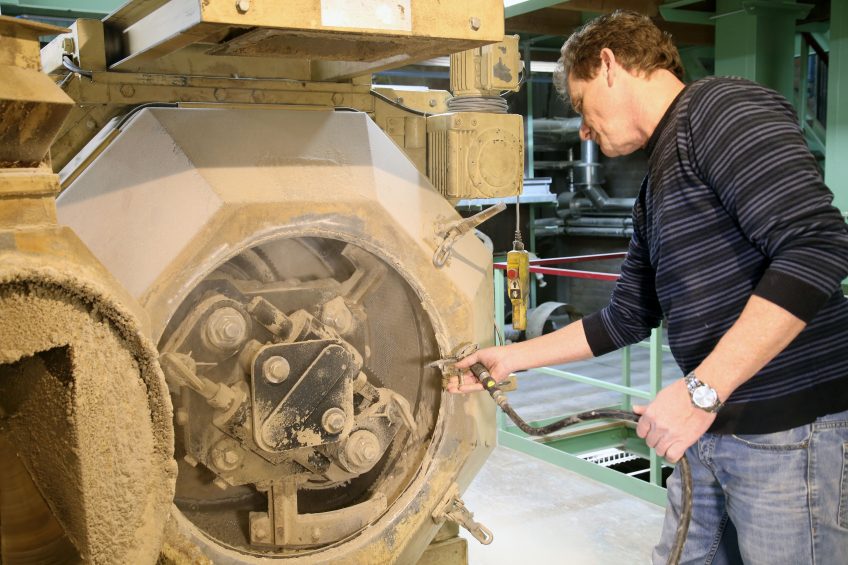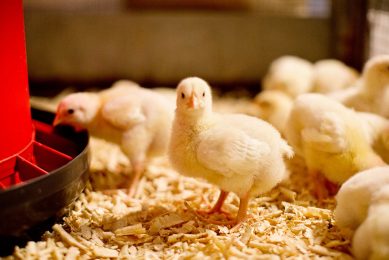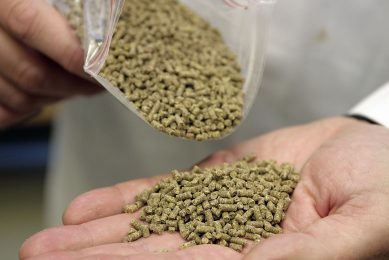Pelleting’s role in producing effective feeds

Some of the ingredients in animal feed, contain food already suitable for human consumption. This challenges feed manufacturers to make sure the final feed compound is containing all the right ingredients to become an effective feed for the benefit of the animals and the eventual food on the table.
Pelleting is a well-known process in the compound feed industry. The transformation of feed meal into pellets has benefits regarding nutritional properties and logistic handling of the end product. Because the meal is formed into pellets after mixing of the ingredients, each pellet contains the nutrients as specified by the nutritionist. This prevents selective eating of the animals, ensuring each animal will consume a balanced diet.
Pelleting of the feed also improves the logistic properties of the compounded feed. The pellets have a higher density then feed mash, enabling more feed to be transported in the same shipment. Furthermore, the dust formation in the product handling is significantly reduced, resulting in reduced (cross) contamination through the entire logistics process.
Determining factors while pelleting
The key to an efficient pelleting process is to determine the optimal compromise between energy consumption and pellet quality, while producing the desired capacity. Many factors are of influence on the pelleting process, from the recipe, to conditioning parameters, roller gap distance and pellet mill die specifications. For example:
- By adding more steam, gelatinisation is improved and the meal can be pelleted better. This results in a higher capacity, improved quality and less energy consumption.
- By increasing the roller gap distance to the die a higher quality can be realised because more pressure (mechanical energy) is applied. This will however have a negative effect on capacity and energy consumption as more power is needed to force the meal through the die. The same effect can be achieved by changing to a die with a larger die thickness.
There is a limit to the quantity of steam that can be added as too much steam addition can cause a roller slip. The consequences of a roller slip are severe. Operators are always very cautious for this because – in the worst case scenario – it will not be possible to get the die to pellet again. When the die needs to be replaced, it takes at least one hour. This is why many feed millers tend to load the pellet mill on the safe side. Also the frequent adjustment of the rollers is often skipped. Changing the roller continuously by hand would negatively influence the required capacity.
A new generation pellet mills
Van Aarsen has launched a new generation of pellet mills with motor-operated roller adjustment and active roller slip control. This means that compound feed manufacturers can always produce exactly the correct pellet quality with one push of a button. With the new CU Dynamic pellet mill, producers can prevent downtime caused by the mill becoming blocked. This can result in a 15% increase in production capacity.
The pellet mill was developed with motor-operated roller adjustment especially for compound feed manufacturers who have to make regular recipe changes. With this new pellet mill, feed producers can set optimum roller distance to the die with one push of a button. Thanks to a link to the factory automation system it is possible to select the correct roller setting automatically for established recipe settings. This means the recipe can be changed quickly and easily. As the mechanical energy factor can also be determined by setting the roller distance, the die (thickness) does not have to be changed as often. This also helps reduce downtime.

Reducing downtime due to roller slip
The new pellet mill is equipped with an active roller slip control system. When the rollers slip and the mill threatens to become full, the system detects the slip and takes immediate action. The active roller slip control presses the rollers immediately against the die, preventing the rollers slipping and the meal accumulated in front of the roller is milled away. The control system reduces downtime due to roller slip by 95%. If the mill stops due to another overload, the rollers can be retracted by the motor-operated roller adjustment and pressed against the die after start up so that the mill operates again quickly. The motor-operated adjustment of the rollers is even possible while the pellet mill is in full operation.
With this active roller slip control the operator is offered the opportunity to experiment with the roller distance and steam addition for the recipes to boost the feed quality and production efficiency. Operators can rely on this system while exploring the settings for the most optimum production.
Reduced feed costs
Feed costs are mainly determined by a few components: the cost of raw materials, labour costs, energy prices, and depreciation, modernisation or reinvestment in milling facilities. Feed millers globally are challenged to optimise performance, minimise energy consumption and lower maintenance costs and unplanned downtime.
Also here the new generation pellet mill helps feed millers by lowering maintenance costs. The new pellet mill is equipped with a die cleaning mode so that the operator can clean the die easily whenever they want. The meal does not have the opportunity to cake onto the die, which results in a quick start-up of the pellet mill. As the rollers retract automatically after each product, there is less wear of the die and rollers and their life is increased by up to 30%. Overall, the new CU Dynamic pellet mill increases flexibility and pellet quality and reduces downtime. This results in an increase in production capacity and also savings on maintenance and equipment. If required, existing Van Aarsen mills can be upgraded with this new technology.
New pellet mill in practise
Dutch animal feed producer, Havens Diervoeders, works with more than 600 different recipes producing feed for pigs, cattle, goats, horses, rabbits and poultry. Over the past two years the company has tested the new CU Dynamic pellet mill (pictured). Surprised by the positive results of the new motor-operated roller adjustment and active slip control, the company decided to upgrade the existing C900 mill to the new CU Dynamic pellet mill. To do this the complete internal mechanism of the pellet mill had to be replaced.

With one push of the button the company can now determine the correct roller
setting. Even when the production process is in full operation. This means that the manufacturer achieves now guaranteed optimum pellet quality for all feed types. Factory manager Hans Graat: “We are positively surprised by the reduced wear of the costly dies and rollers.” Operator Roel Brouwers adds: “There’s a lot less wear. This is due to the automatic retraction of the rollers after each batch. It’s also much easier to respond to the conditions on the day during the production process.” According to Brouwers: “The product passes through the die better. We can determine the hardness of the pellet better and set everything accordingly. The active slip control detects slip and resolves the problem immediately.”













